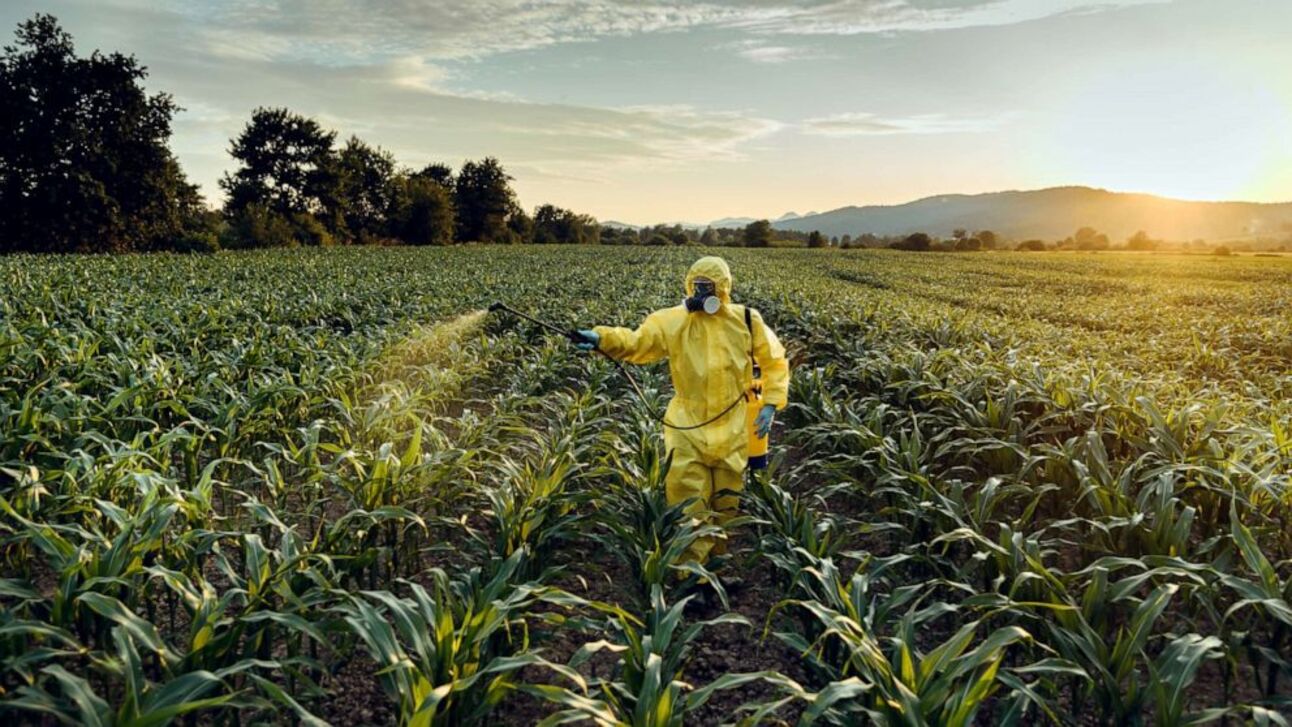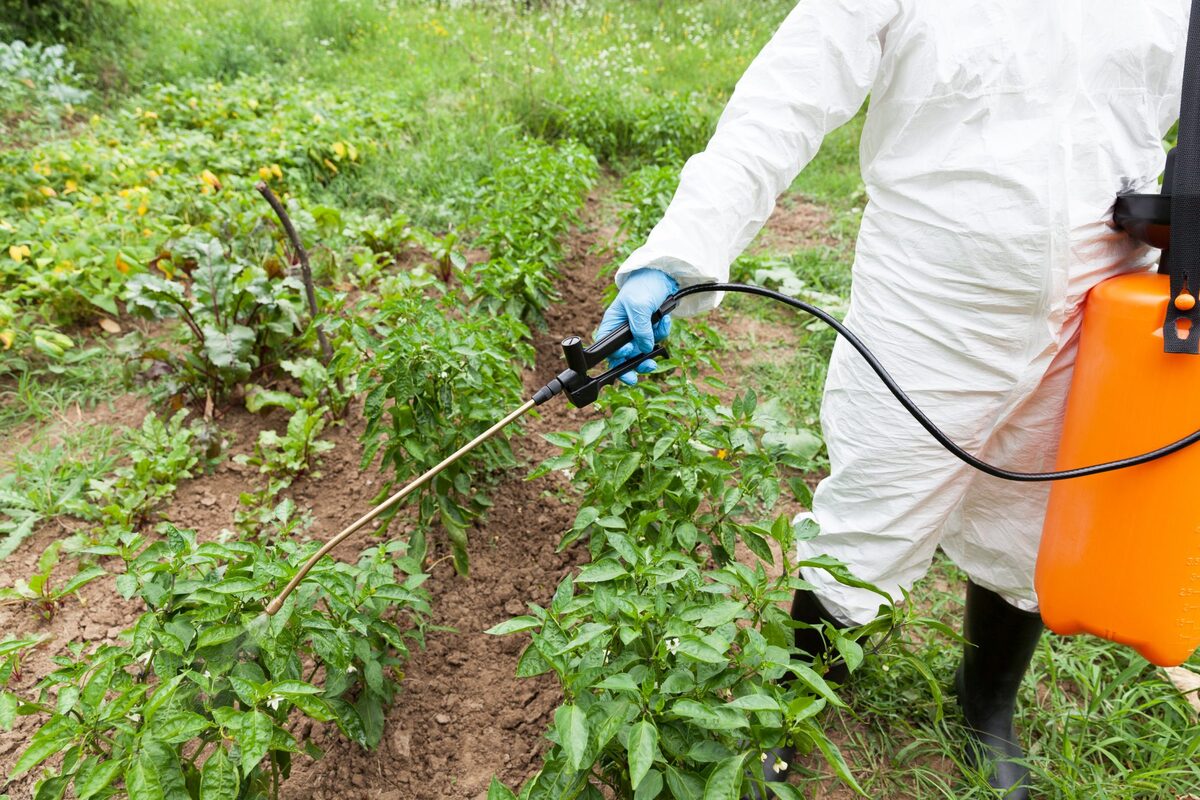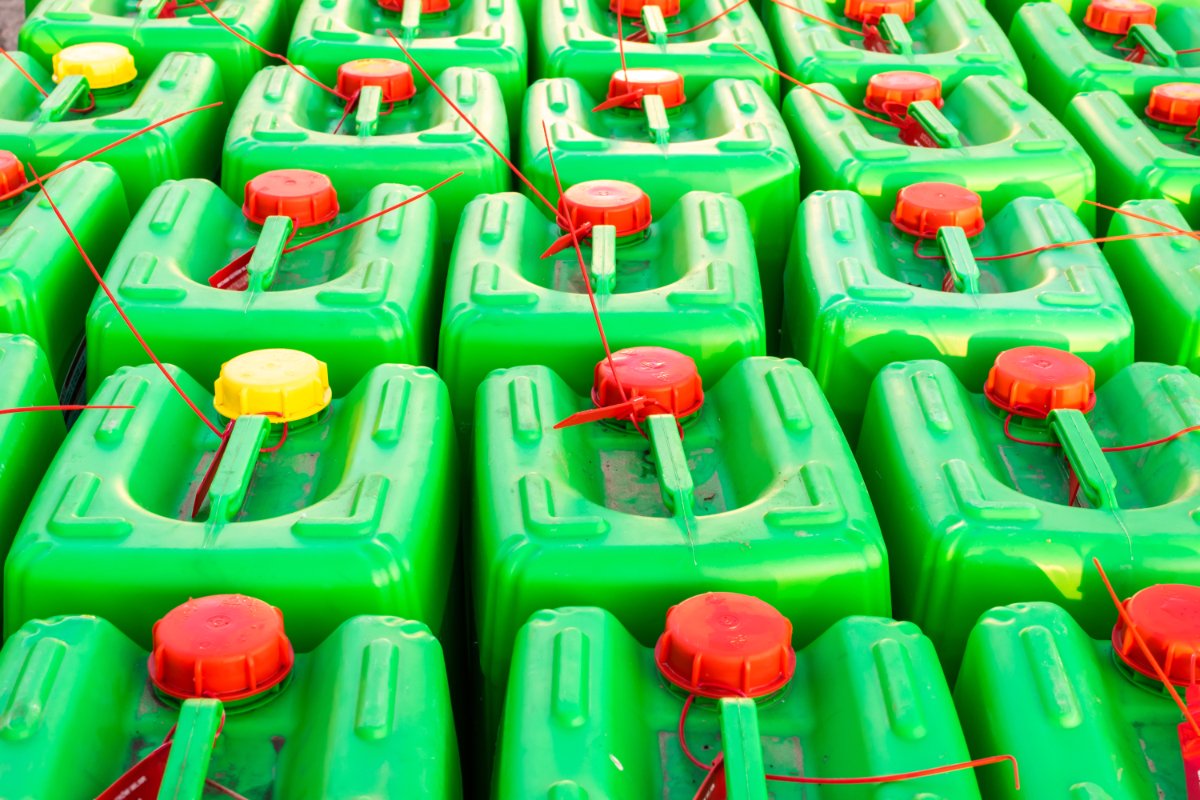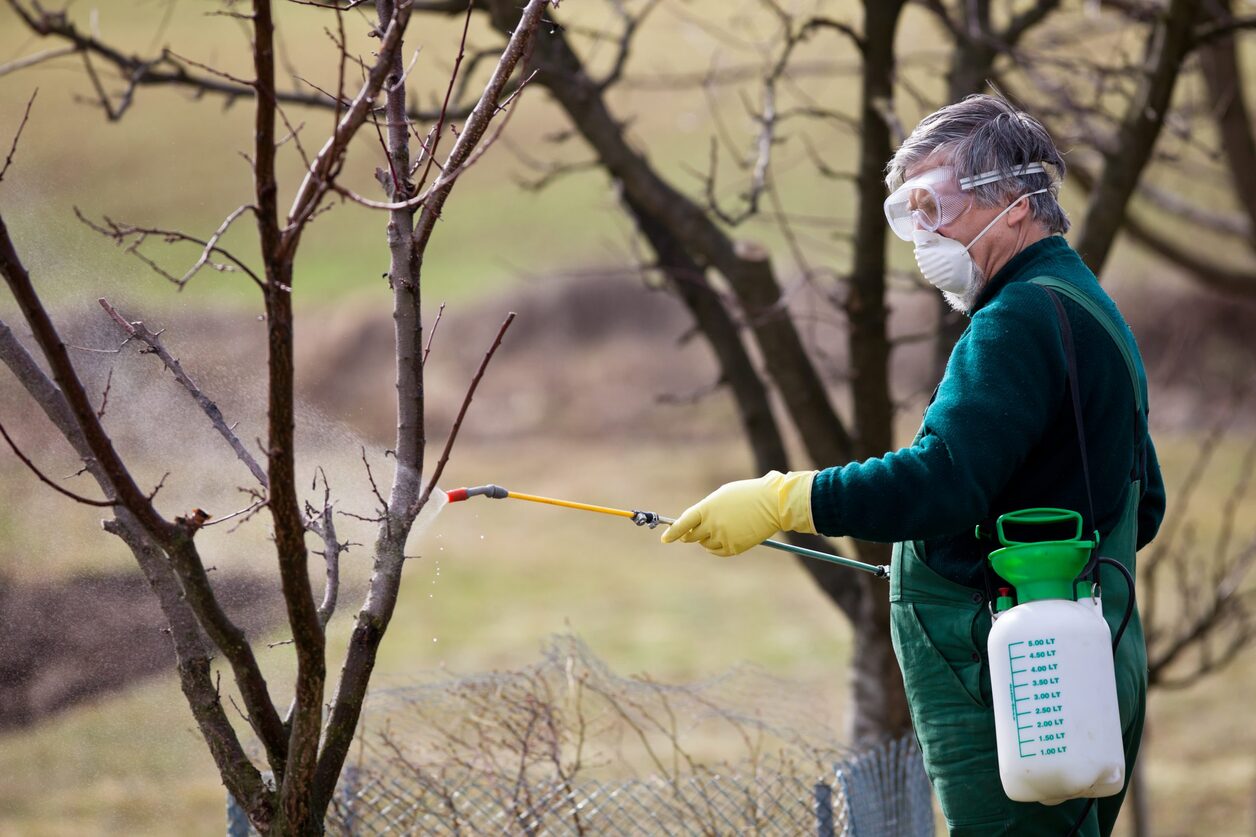Home>Gardening News and Trends>Latest News>What Happens If You Inhale Pesticides


Latest News
What Happens If You Inhale Pesticides
Published: November 25, 2023
Discover the latest news and find out what happens if you inhale pesticides. Stay informed and protect your health with our comprehensive guide.
(Many of the links in this article redirect to a specific reviewed product. Your purchase of these products through affiliate links helps to generate commission for Chicagolandgardening.com, at no extra cost. Learn more)
Table of Contents
Introduction
Pesticides play a crucial role in modern agriculture, helping to protect crops from pests and diseases. However, when these chemicals are not handled properly, they can pose significant risks to human health. In particular, inhaling pesticides can have immediate and long-term effects on the respiratory system and overall well-being.
Understanding the potential health risks associated with inhaling pesticides is essential for both farmers and the general public. In this article, we will explore the dangers of inhaling pesticides, the immediate and long-term effects it can have on the body, and what to do if you accidentally inhale these chemicals.
Pesticides come in various forms, including sprays, dust, and fumes. They are designed to kill or control the population of pests that can damage crops or spread diseases. While these chemicals are effective in their intended purpose, they can also be harmful to humans, particularly if proper precautions are not taken.
When pesticides are inhaled, they can enter the respiratory system and be absorbed into the bloodstream. This can lead to a range of health complications, depending on the type and concentration of the pesticide, as well as the duration of exposure.
In the next sections, we will delve deeper into the specific health risks of inhaling pesticides, including both the immediate effects that can occur shortly after exposure and the potential long-term effects that may develop over time. It is important to note that the severity of these effects can vary depending on various factors, such as the individual’s overall health, the specific pesticide involved, and the duration and intensity of exposure.
Understanding Pesticides
Pesticides are chemical substances used to control or eliminate pests, including insects, weeds, fungi, and rodents. They are widely used in agriculture, gardens, and households to protect crops, ensure food security, and maintain public health. Pesticides can be classified into several categories, such as insecticides, herbicides, fungicides, and rodenticides, each targeting specific types of pests.
These chemicals work by interfering with the physiological processes of pests, either by causing damage to their nervous systems or disrupting their reproductive systems. While pesticides are effective in controlling pests, they can also have unintended consequences on human health and the environment if not used properly.
Pesticides can be in the form of sprays, powders, liquids, granules, or fumigants. They can enter the body through various routes, including ingestion, dermal exposure (absorption through the skin), or inhalation. Inhaling pesticides occurs when airborne particles or fumes from pesticide applications are breathed in.
It is important to note that not all pesticides are equally toxic or pose the same level of risk. The toxicity of a pesticide depends on several factors, including its chemical composition, concentration, method of application, and duration of exposure. Some pesticides are categorized as highly toxic, while others are considered relatively less harmful to human health.
Pesticides can have both acute and chronic health effects. Acute effects refer to immediate or short-term health reactions that occur shortly after exposure to pesticides. These can include symptoms such as dizziness, headaches, nausea, vomiting, difficulty breathing, eye irritation, and skin rashes. In severe cases, acute pesticide poisoning can lead to loss of consciousness, seizures, or even death.
Chronic effects, on the other hand, develop over a longer period of time and are often associated with repeated or prolonged exposure to pesticides. These effects may not manifest immediately but can have serious long-term consequences on human health. Chronic exposure to certain pesticides has been linked to various health issues, including respiratory problems, neurological disorders, reproductive disorders, and even an increased risk of certain types of cancer.
Understanding the nature of pesticides and their potential risks is crucial for farmers, pesticide applicators, and anyone who may come into contact with these chemicals. By recognizing the potential hazards and taking necessary precautions, it is possible to mitigate the risks associated with pesticide exposure and ensure the safety of both humans and the environment.
Health Risks of Inhaling Pesticides
Inhaling pesticides can have significant health risks due to their toxic nature. When pesticides are inhaled, they can directly enter the respiratory system and be absorbed into the bloodstream, potentially affecting various organs and systems in the body.
The immediate health effects of inhaling pesticides can vary depending on the specific chemical involved and the concentration of exposure. Common symptoms that may occur shortly after inhalation include:
- Coughing and wheezing
- Shortness of breath
- Chest tightness
- Irritation of the nose, throat, and eyes
- Dizziness and nausea
These symptoms can be particularly severe for individuals with pre-existing respiratory conditions such as asthma or chronic obstructive pulmonary disease (COPD). If left untreated, acute pesticide poisoning can lead to more serious complications, including respiratory failure and even death.
Long-term exposure to pesticides through inhalation can have more far-reaching health consequences. Chronic inhalation of certain pesticides has been linked to an increased risk of developing respiratory disorders such as bronchitis, asthma, and pulmonary fibrosis. These conditions can lead to chronic inflammation, scarring of lung tissue, and reduced lung function.
In addition to respiratory issues, prolonged exposure to pesticides through inhalation has been associated with neurological disorders. Studies have shown a correlation between pesticide exposure and an increased risk of Parkinson’s disease, Alzheimer’s disease, and other neurodegenerative disorders. Inhalation of certain organophosphate pesticides has been particularly linked to these neurological effects.
Pesticides can also have reproductive and developmental effects when inhaled. Both male and female reproductive systems can be affected, leading to fertility issues, hormonal imbalances, and birth defects. Pregnant women exposed to pesticides through inhalation are at a higher risk of miscarriage, premature birth, and developmental delays in their children.
Furthermore, some pesticides have been classified as carcinogens, meaning they have the potential to cause cancer. Chronic exposure to these substances through inhalation can increase the risk of developing various types of cancer, including lung, bladder, and prostate cancer.
It is important to note that the health risks associated with inhaling pesticides can vary depending on the specific chemical, its concentration, duration and frequency of exposure, and individual susceptibility. Certain populations, such as children, the elderly, and individuals with compromised immune systems, can be more vulnerable to the adverse effects of pesticide inhalation.
Given the potential health risks, it is crucial to take necessary precautions and prioritize safety when working with or near pesticides. Proper training, handling, and use of protective equipment can help minimize the risks of pesticide inhalation and protect the well-being of individuals and communities.
Immediate Effects of Inhaling Pesticides
Inhaling pesticides can lead to immediate health effects, which can vary in severity depending on the specific pesticide involved, concentration of exposure, and duration of inhalation. Immediate effects can manifest shortly after exposure and may include respiratory symptoms, eye irritation, and systemic effects.
One of the most common immediate effects of inhaling pesticides is respiratory irritation. This can manifest as coughing, wheezing, shortness of breath, and chest tightness. The respiratory system can become inflamed and irritated due to the toxic fumes or particles inhaled. Individuals with pre-existing respiratory conditions like asthma or COPD may experience more severe symptoms.
Eye irritation is another common immediate effect of pesticide inhalation. The eyes can become red, watery, itchy, and sensitive to light. Direct contact with pesticides or exposure to their fumes can cause chemical burns to the eyes, leading to severe discomfort and vision problems.
In addition to respiratory and eye irritation, individuals may also experience systemic effects after inhaling pesticides. These effects can include dizziness, nausea, headache, and gastrointestinal disturbances. Chemicals absorbed into the bloodstream through the lungs can affect different organs and systems in the body, leading to general feelings of malaise.
In some cases, immediate effects of inhaling pesticides can be more severe and potentially life-threatening. Acute pesticide poisoning can occur if a high concentration of toxic pesticides is inhaled. Symptoms of acute poisoning may include difficulty breathing, confusion, excessive sweating, muscle tremors, and even loss of consciousness or seizures.
It is important to note that the severity of immediate effects can vary based on individual factors such as age, overall health, and susceptibility to particular pesticides. Higher concentrations of pesticides, longer durations of exposure, and inadequate ventilation in the area can all increase the risk and severity of immediate health effects.
If individuals experience any of these immediate effects after inhaling pesticides, it is crucial to seek medical attention immediately. Healthcare professionals can assess the situation, provide appropriate treatment, and help mitigate further health risks.
Prevention and precautionary measures should always be prioritized to minimize the risk of inhaling pesticides and experiencing immediate health effects. This includes following proper safety guidelines, using personal protective equipment (PPE) such as masks, gloves, and goggles, ensuring adequate ventilation in work areas, and staying informed about the potential hazards associated with specific pesticides.
By being aware of the potential immediate effects of inhaling pesticides and taking necessary precautions, individuals can help protect themselves and reduce the risk of adverse health reactions.
Long-Term Effects of Inhaling Pesticides
Inhaling pesticides over a prolonged period can lead to long-term health effects that may develop over time. Chronic exposure to pesticides through inhalation has been associated with various health complications, including respiratory disorders, neurological disorders, reproductive issues, and an increased risk of certain types of cancer.
One of the long-term effects of inhaling pesticides is the development of respiratory disorders. Prolonged exposure to certain pesticides can lead to chronic respiratory issues such as bronchitis, asthma, and pulmonary fibrosis. These conditions can cause persistent inflammation, scarring of lung tissue, and reduced lung function. Individuals may experience symptoms such as coughing, wheezing, shortness of breath, and increased vulnerability to respiratory infections.
Neurological effects are another concern associated with long-term pesticide inhalation. Studies have shown a correlation between pesticide exposure and an increased risk of developing neurodegenerative disorders such as Parkinson’s disease, Alzheimer’s disease, and other cognitive impairments. Certain pesticides, particularly organophosphates, have been linked to these neurological effects, which can lead to motor dysfunction, memory loss, and other cognitive impairments.
Pesticide inhalation can also have effects on reproductive health. Both male and female reproductive systems can be affected by chronic pesticide exposure, leading to fertility issues, hormonal imbalances, and birth defects. Pregnant women exposed to pesticides through inhalation are at a higher risk of miscarriage, stillbirth, premature birth, and developmental delays in their children. Children exposed to pesticides in the womb may also experience long-term effects on their physical and cognitive development.
Furthermore, certain pesticides have been classified as carcinogens, indicating their potential to cause cancer. Chronic inhalation of these substances can increase the risk of developing various types of cancer, including lung cancer, bladder cancer, and prostate cancer. The carcinogenic effects of pesticides can be particularly concerning for individuals regularly exposed to high concentrations, such as agricultural workers and pesticide applicators.
It is important to recognize that the severity of long-term effects can vary depending on factors such as the specific pesticide, its concentration, duration and frequency of exposure, and individual susceptibility. Some individuals may be more vulnerable to these effects, especially those with pre-existing health conditions or genetic predispositions.
To mitigate the long-term effects of pesticide inhalation, implementing preventive measures is crucial. This includes using proper ventilation systems to minimize airborne pesticide concentrations, wearing personal protective equipment (PPE), adhering to safety regulations and guidelines, and seeking medical advice if any symptoms or concerns arise.
By understanding the potential long-term effects of inhaling pesticides and taking appropriate precautions, individuals can protect their health and well-being, as well as reduce the risks associated with chronic pesticide exposure.
What to Do If You Accidentally Inhale Pesticides
If you accidentally inhale pesticides, it is important to take immediate action to minimize further exposure and mitigate potential health risks. Here are the recommended steps to follow:
- Move to a well-ventilated area: If you are indoors, quickly move to an area with fresh air. Open windows and doors to improve ventilation. If you are outdoors, try to find a location away from the source of the pesticide and with clean air.
- Remove contaminated clothing: If your clothing came into contact with the pesticide, remove it as soon as possible to prevent further exposure. Make sure to handle the clothing with care to avoid spreading the pesticide.
- Rinse your mouth and nose: Gently rinse your mouth and nose with clean water to remove any pesticide particles or residue that may have been inhaled. Spit out the water and do not swallow it.
- Seek medical help: Contact a healthcare professional or call the emergency services immediately, especially if you are experiencing severe symptoms or are in a critical condition. Provide them with as much information as possible about the pesticide involved and the nature of the exposure.
- Do not induce vomiting: Unless specifically instructed to do so by a healthcare professional, do not induce vomiting. Some pesticides can cause further harm if they are vomited back into the respiratory system.
- Follow medical advice: Follow the guidance and instructions provided by the healthcare professional. They may recommend specific treatments or therapies to counteract the effects of the pesticide and protect your health.
- Report the incident: Inform the appropriate authorities, such as your local poison control center or occupational health and safety agency, about the accidental pesticide inhalation. This helps to raise awareness and ensure proper documentation of the incident.
- Take preventive measures in the future: To avoid similar accidents in the future, always prioritize safety when working with or near pesticides. Follow proper handling and protective measures, read and understand the labels and instructions on pesticide containers, and seek training or guidance on safe pesticide use.
It is important to note that the steps above are general guidelines and may vary depending on the specific pesticide involved and the severity of the exposure. Immediate medical attention and advice should always be sought in case of pesticide inhalation to ensure appropriate and timely treatment.
By following these steps and taking proper precautions, individuals can minimize the risks associated with accidental pesticide inhalation and protect their health and well-being.
Prevention and Safety Measures
Prevention is key when it comes to minimizing the risks associated with pesticide inhalation. By implementing proper safety measures and following recommended guidelines, individuals can protect themselves and others from the harmful effects of these chemicals. Here are some important prevention and safety measures to consider:
- Use alternative pest control methods: Whenever possible, explore and utilize non-chemical pest control methods, such as integrated pest management (IPM) techniques. These methods focus on prevention, monitoring, and targeted use of pesticides, reducing overall pesticide exposure.
- Read and follow pesticide labels: Carefully read and understand the instructions and safety precautions provided on pesticide labels. Follow the recommended application rates, application methods, and safety guidelines specified by the manufacturer.
- Wear appropriate personal protective equipment (PPE): Use PPE, such as respirators, gloves, goggles, and protective clothing, to minimize direct contact with pesticides. Make sure the PPE is appropriate for the specific pesticide being used and properly fitted for maximum effectiveness.
- Ensure proper ventilation: When working with pesticides indoors, ensure adequate ventilation to reduce the concentration of airborne pesticide particles or fumes. Open windows, use exhaust fans, and consider using air purifiers to improve air quality.
- Store and dispose of pesticides correctly: Follow proper storage and disposal guidelines for pesticides to prevent accidental exposure and environmental contamination. Store pesticides in locked cabinets or designated areas away from children, pets, food, and water sources.
- Minimize direct exposure: Avoid direct contact with pesticides, especially when they are being mixed, applied, or sprayed. Be cautious when handling treated surfaces, plants, or equipment, and wash your hands thoroughly after any contact.
- Seek proper training and certification: If you are involved in professional pesticide application, ensure you have received appropriate training and certification. A comprehensive understanding of pesticide safety, handling, and application techniques is crucial to minimize risks.
- Keep children and pets away: Restrict access to areas where pesticides are being used or stored. Ensure children and pets are kept away from treated areas until it is safe, and follow specific guidelines regarding re-entry times after pesticide application.
- Regularly maintain and calibrate equipment: Maintain and calibrate pesticide application equipment regularly to ensure accurate dosage and prevent accidental spills or leaks that could lead to inhalation exposure.
Adhering to these prevention and safety measures can significantly reduce the risks associated with pesticide inhalation. It is important to stay informed about the potential hazards of specific pesticides and stay up to date with the latest safety recommendations and regulations.
By prioritizing safety, following proper procedures, and being proactive in preventing pesticide exposure, individuals can safeguard their health, as well as protect the environment and surrounding communities.
Conclusion
Inhaling pesticides can have serious implications for human health, both in the short-term and long-term. Understanding the risks associated with pesticide inhalation is crucial for individuals who work with or near these chemicals, as well as the general public.
Pesticides, while effective in controlling pests and diseases, can pose immediate health risks when inhaled. Symptoms such as respiratory irritation, eye irritation, and systemic effects can occur shortly after exposure. Prolonged exposure to pesticides through inhalation can lead to chronic respiratory disorders, neurological disorders, reproductive issues, and an increased risk of certain types of cancer.
To minimize the risks, it is important to prioritize prevention and safety measures. This includes using alternative pest control methods whenever possible, properly storing and disposing of pesticides, wearing appropriate personal protective equipment, ensuring proper ventilation, and seeking proper training and certification for pesticide application.
In the event of accidental pesticide inhalation, individuals should move to a well-ventilated area, remove contaminated clothing, rinse their mouth and nose, seek medical help, and follow the advice provided by healthcare professionals.
By being proactive in preventing pesticide exposure, following safety guidelines, and taking necessary precautions, individuals can protect their health and minimize the risks associated with pesticide inhalation. It is essential to stay informed about the potential hazards of specific pesticides and stay up to date with safety recommendations and regulations.
Remember, the health and well-being of individuals and the environment should always be a priority when working with pesticides. By practicing responsible pesticide use and emphasizing safety, we can mitigate the adverse effects of pesticide inhalation and contribute to a safer and healthier future for everyone.










